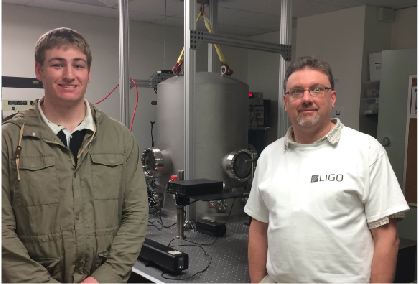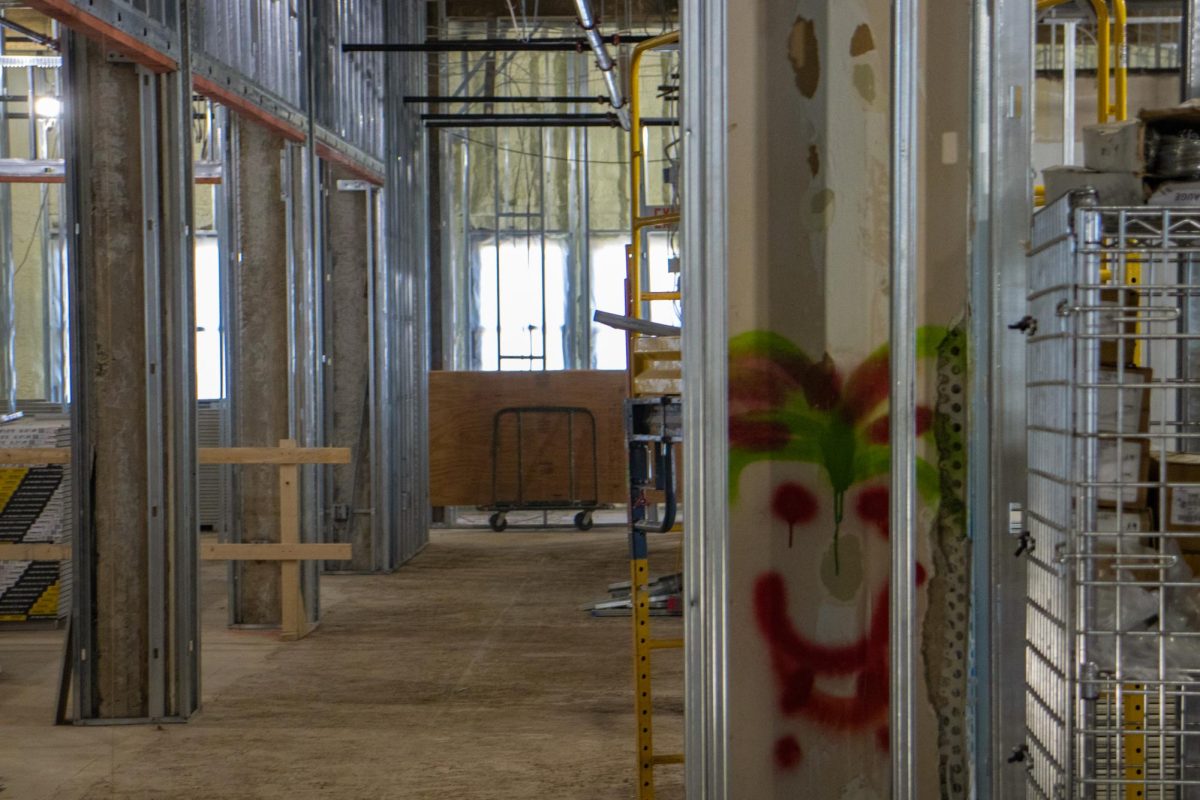Making Waves: Gregg Harry

April 26, 2016
More than a century after Albert Einstein theorized the existence of gravitational waves—ripples in the air generated by large movements of matter—science has achieved what he thought would never be possible: detecting and measuring these waves. The discovery is sending a fresh wave of excitement through the scientific community, and one of American University’s own physics professor is a member of the team who made it.
“If nothing else this shows us how expansive our space-time universe truly is,” said Professor Gregory Harry.
The project is known as the Laser Interferometer Gravitational-Wave Observatory, or LIGO. Dr. Harry has been formally involved with the group for 16 years, but has been working on gravitational wave detection for over 20 years.
It may seem like a narrow topic to fixate on, but it’s fascinating enough to have attracted over 1000 scientists from some of the top institutions around the globe. The LIGO detectors are measuring “ripples in the fabric of space-time, arriving at Earth from a cataclysmic event in the distant universe,” according to a press release from the California Institute of Technology (Caltech), which originally conceived and currently operates the observatories along with the Massachusetts Institute of Technology.
LIGO scientists estimate that the merging of two black holes, roughly 29 and 36 times the size of the sun, respectively, created these ripples 1.3 billion years ago. The ripples, or the gravitational waves, are measured with an L-shaped pair of tubes called an interferometer, which hold lasers up to 4 km (2.5 miles) long. When a gravitational wave passes through the interferometer, it shifts the lasers slightly. The interferometer can detect a shift as small as one-ten-thousandth of a proton, or a millionth of a millionth of a millionth (that isn’t a typo) of a meter.
Harry’s interest in gravitational waves began in high school during the 1980s, when he presented on the subject. He then received his bachelor’s degree in physics from Caltech, where he studied under Kip Thorne, a pioneer of LIGO and a mentor to Harry.
One key to the success of LIGO was finding the perfect materials to detect gravitational waves and filter out other disruptions. Harry specialized in this aspect of the project, working with a downsized version of the interferometer in his lab at AU.
“It’s a really exciting feeling to know the work I’ve done, in graduate school and beyond, has helped make this possible,” he said.
Few people think of AU as a hotbed for science, but Harry said that he has remained at the university for good reason. He loves his colleagues and students and prefers to not work in “a cutthroat environment.” He also enjoys discussing the policy side of science, and has several students who are double majors in science and the School of International Service or the School of Public Affairs.
A few of Harry’s students have had the opportunity to work with him on the LIGO project. One of his current assistants is Louis Gitelman, a senior majoring in physics.
Seeking some real world experience in the physics world, Gitelman asked if he could assist Harry during his junior year. As a result, he became part of an international science collaborative that has enhanced our understanding of the vastness of our universe.
“With physics, the day-to-day is gritty and specific,” Gitelman said. “There are administrative and bureaucratic challenges, but to be part of a discovery like this reminds you what physics is all about.”
AU is already known as an internationally progressive school, but due to the contributions of Harry and his team, the work of this school may be moving into the intergalactic realm.
“There’s a lot of effort going into science at AU,” Harry said. “And I think we’ll see that this will bring a lot of attention to the cause.”


